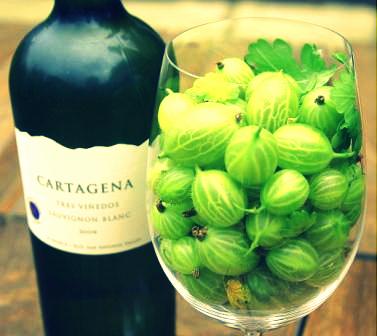Talking savvy
(by peter)
I love Sauvignon Blanc.
It’s one of the wines Susie and I regularly reach for – mostly as an early-evening aperitif, to be sure, but also as a food wine. It regularly features on our Saturday Kitchen recommendations because of its versatility, especially with Asian and fusion cuisine.
I mention all of this because I was recently in Holland hosting an event for distributor and merchant Jean Arnaud. The subject was Sauvignon Blanc. And it got me thinking about people’s attitudes to Savvy.
When we serve it at our events, it tends to be a love/hate style. Some find it too characterful or too tangy. Others – they tend to be experts – disdain Sauvignon as a one-trick pony, a simplistic variety that’s all brass (aromatic power) and no brains (structure, longevity, complexity etc).
In short, Sauvignon Blanc’s demise has been long predicted. One notably eminent wine expert even sniffily predicted in 1992 that, ‘Sauvignon Blanc looks set to fall out of favour, so well is it doing in the fashion conscious corners of the globe’.
Clearly, this view was short-sighted. Sauvignon is now 10th in the list of worldwide grape variety plantings and, in the UK, it is in pole position as one of the nation’s favourite wine styles (tied at 8% of the volume retail market with Chardonnay and Pinot Grigio, growing slower than the latter but faster than the former, according to AC Nielsen).
Yes, Sauvignon Blanc can play to the crowds with its intensely aromatic, sometimes opulent style. But equally it can make intensely savoury, complex whites when cropped low and made with great care in small batches.
 For all its naturally exuberant nature, it is also inherently versatile.
For all its naturally exuberant nature, it is also inherently versatile.
It can work well with oak and in blends (especially with Semillon). It can make opulent styles (a touch of residual sugar balancing the crisp acid and facilitating a pairing with spicy Asian cuisine) or tight, lean, taut wines. It can benefit from a bit of ‘positive reduction’ – ie those gunflint, struck match, toasty aromas that often come from extended contact with lees or even being sealed in screwcap. It can make very decent sweet wines – and acceptable (if slightly confected) fizz.
I’d suggest that we’re only just starting to see the best of Savvy. A new accent on terroir in Marlborough – surely the global reference point for Sauvignon – as well as a new ambition and expertise in winemaking is seeing increasingly deft, complex and engaging Savvies emerging.
Some of our favourite producers around the world include Dog Point, Greywacke, Craggy Range, François Cotat, Didier Dagueneau, Casa Marin, Viña Leyda, Calyptra, Château Doisy-Daëne, Ataraxia, Cape Point and Hamilton Russell. Don’t tell me these producers don’t make beautiful, complex, inspirational wine from Sauvignon Blanc.
And to this list we can now add another name: Astrolabe.
We hadn’t come across this Marlborough producer before but it will firmly be on our radar now after we tasted two of their delightful, structured, terroir-driven Sauvignons (see tasting notes below – I showed both these wines at the Jean Arnaud event, who are their importers in Holland). These will double up as our Wines of the Week; their importer in the UK is Ellis of Richmond.
 We look forward to many more such discoveries as we continue our delicious odyssey with this contentious grape.
We look forward to many more such discoveries as we continue our delicious odyssey with this contentious grape.
Tasting notes
Astrolabe Voyage Sauvignon Blanc Marlborough 2010, 13.5% (£13.99, New Zealand House of Wine) – winemaker Simon Waghorn set up this boutique brand with a group of like-minded friends in 1996. Slightly confusingly, the winery rebranded its lines from the 2011 vintage, so this ‘Voyage’ now becomes ‘Province’. The wine is a blend of fruit from Waihopai, Wairau and Awatere – and it’s the latter style that marks it, all punchy green pepper and tomato leaf, with a juicy yet vivid flavour profile with hints of paprika and nettles. Focused, rounded, lively. Classy and delicious. 7-7.5/10
Astrolabe Discovery Kekerengu Coast Sauvignon Blanc 2010, 13% (£19.99, Majestic) – from the Kekerengu Coast, an area we’d never heard of but which lies further south from Awatere along the coast. It’s a breezy, foggy, windy area, perhaps even more extreme than parts of Awatere. The resultant style, together with a touch of deft oaking, is one of layered intensity and compelling, savoury flavour. It doesn’t so much speak of simple fruit as earth, wind, and a slightly feral edge. Kumquat and nut flavours, crisp, creamy, super long. Lovely structure, effortless class. Delightful. (Rebranded as ‘Valleys’ from 2011.) 8/10

